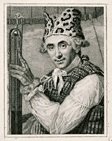Flagging the “Object of History” Podcast
The description says:
In this episode, we closely examine one of the most noteworthy items in the MHS collection: the Bucks of America flag. The flag is one of the only remaining artifacts of the Bucks of America, an African American militia based in Boston during the Revolutionary era. There is very little known about the unit with no official military record of their service. We discuss the few pieces of evidence that we have including the flag presented by Governor John Hancock after the end of the Revolutionary War.The guests are Ben Remillard from the University of New Hampshire and myself.
I haven’t listened yet. Last month I talked with Cassandra Cloutier for an hour, dumping all my thoughts and theories about the Bucks of America and George Middleton on her—the Dr. James Lloyd connection, the false link to the Battle of Groton Heights, the evidence that he and Lewis Glapion both had wives and children when they owned a house together. Only the best and most relevant pronouncements made this thirty-five-minute episode, I presume.
The first person with whom I shared ideas about the Bucks of America flag, several years ago, was curator Anne Bentley. So I’m taking this opportunity to note that the New England Museum Association just gave Bentley one of its 2022 Awards for Excellence. The citation says:
Her almost 50 years of service to the organization highlights her dedication and passion for Art and artifacts. She has had the privilege to work on such notable collections as the Adams and Winthrop families, her final lab project was Thomas Jefferson’s manuscript “Notes on the State of Virginia.” As curator of the art and artifact collection and acting registrar from 1998 through 2021, she enjoyed collaborating with curators and registrars in New England and beyond. . . .
“Retiring” at the end of 2021, Anne now works a three-day week, recataloging artifacts and numismatics and assisting the reading room staff in making these materials available to researchers.




